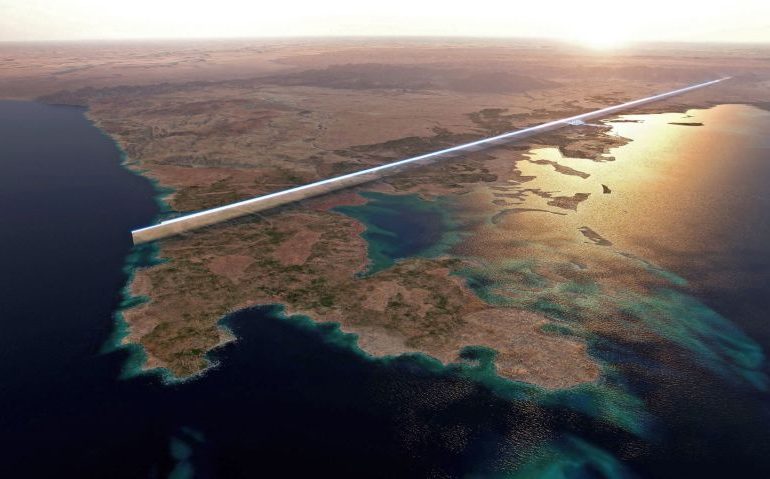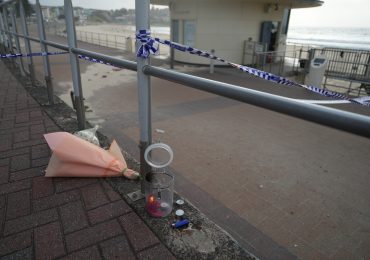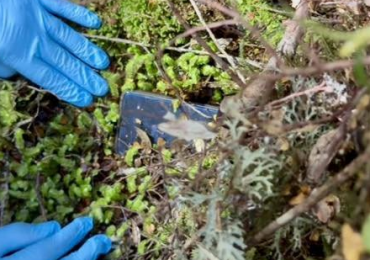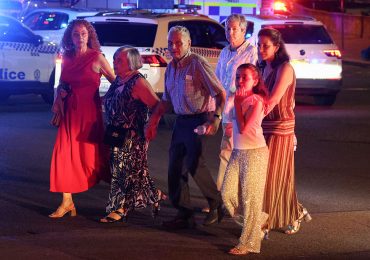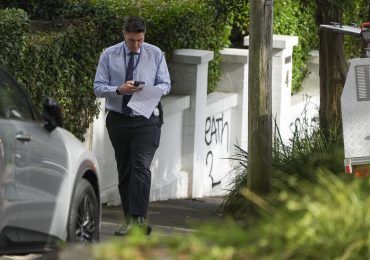SAUDI Arabia’s egomaniac plan to become the centre of the world seem to be crashing down as it’s been labelled “untethered to reality”.
Touting with technology that is yet to be invented, the Kingdom aims to build the world’s tallest skyscrapers, futuristic cities and even a fake moon.
AFPSaudi Arabia is investing billions on several megalomaniac projects to be completed by the end of the decade[/caption]
YouTube/NEOMThe Line – the Kingdom’s flagship project for 2030 – was dramatically scaled back[/caption]
Projects also include the construction of two enormous glass skyscrapers, measuring an incredible 738ft and 908ft
With Vision 2030, the kingdom wants to expand its economy beyond oilWith Vision 2030, Saudi Arabia wants to expand its economy beyond oil[/caption]
Through massive investments as part of Saudi Arabia Vision 2030, the nation revealed its 15 wildly ambitious projects funded by oil billions at an unprecedented rate.
In line with the megalomania vision of Crown Prince Mohammed bin Salman, Saudi is desperate to be the centre of the world.
But despite spending the whopping £1 trillion to get it all done by the end of the decade, Saudi Arabia might not be ditching its reliance on oil so soon.
Its flagship project, The Line, promised to be a 106-mile long sideways skyscraper and transform Saudi Arabia’s economy but it was now dramatically scaled back.
Analysts have also long voiced doubts about the project, which has often boasted technology that has yet to be created.
A former employee previously described The Line as “untethered to reality”.
A Bloomberg investigation from 2022, which interviewed 25 personnel and reviewed 2,700 pages of internal papers, saw the project be beset by setbacks and delays.
Plagued by setbacks
Citing sources close to the project in its story on Saudi Arabia downscaling The Line, Bloomberg reported that the kingdom has failed to approve NEOM’s budget for 2024, despite the fact that it is already well into April.
NEOM’s massive expenditure is reportedly beginning to worry officials, implying that Saudi Arabia’s tremendous riches may not be as limitless as previously thought.
Several of the projects mentioned in Vision 2030 are also due to be postponed beyond the end-of-decade date.
YouTube/NEOMThe Line is a mirrored megastructure initially planned to measure 110 miles[/caption]
Giles Pendleton FRICSBut major setbacks will now see The Line stretching a measly 2.4km[/caption]
Giles Pendleton FRICSAerial images reveal sheer scale of the futuristic city[/caption]
Finance Minister Mohammed Al Jadaan said in December that the project will require more time to build “factories” and “sufficient human resources”.
“The delay or extension of some projects will benefit the economy,” he explained.
The practicality of NEOM and The Line has also long been questioned.
Last year, architect and urban planner Etienne Bou-Abdo said the 3D visuals provided “are not classical 3D architecture images”, and the project designers “have rather called upon video game designers”.
He claimed that the plan contains “a lot of technology that we don’t have today.”
Many of The Line’s essential elements, notably those linked to energy and transportation, are predicated on technology that do not yet exist, even in prototype.
Since its inception, the Crown Prince’s vision for the project has changed frequently, making it difficult for experts to predict his next move.
“The concept has morphed so much from its early conception that it’s sometimes hard to determine its direction: scaling down, scaling up, or making an aggressive turn sideways,” said Robert Mogielnicki of the Arab Gulf States Institute in Washington, following the presentation in 2022.
And now, NEOM’s major flagship project has also been dramatically reduced.
Scaled back
The Line was to be home to 1.5 million residents by 2030 – but will now house 300,000 and stretch a measly 2.4km.
Saudi Crown Prince Mohammed bin Salman Al Saud’s £1trillion city in the desert was promised to be a “civilisational revolution”.
It was the crown jewel in the Saudi government’s Vision 2030 – a program launched to increase diversification economically, socially, and culturally, in line with the Crown Prince’s vision.
With mind-bending proposed dimensions – 106 miles long by 200 metres wide – The Line was supposed to “shine a light on alternative ways to live”, according to the Crown Prince.
The structure was to be created out of mirrored glass in the Tabuk Province, facing Egypt across the Red Sea.
Inside The Line, there was to be every luxury a person could dream of – from an octagonal floating port and a swimming lane to a synthetic ski resort and a sports stadium.
NEOMMegaproject Trojena will offer an all-around outdoor skiing and adventure sports centre[/caption]
AFPAn inside view of The Line[/caption]
NEOMLeyja will be set inside a 1,400ft valley in Saudi Arabia[/caption]
The expected 1.5 million residents were to be served and supported by robots and AI creations.
But the giga-project hoped by the Crown Prince to move Saudi Arabia‘s economy away from its reliance on oil may not proceed as expected, according to new reports seen by The Telegraph.
Despite plans for the mirrored city to extend 106 miles and house 1.5 million residents by the end of the decade, it is now looking more likely that it will stretch 2.4km and house only 300,000 people by 2030.
The “unsurprising” scale-down is said by experts to reflect the Saudi government’s struggles to win over foreign investors, as well as the nation’s vulnerability to oil prices.
[The plan] contains a lot of technology that we don’t have today
Etienne Bou-Abdo
Torbjorn Soltvedt, principal analyst at risk consultancy Maplecroft
Advertisement, told The Telegraph: “Foreign direct investment investors haven’t really bought into the Crown Prince’s vision for a new Saudi Arabia.”
The Line was arguably the most striking element of the proposed 10,232mi2 urban development Neom being built at the northern tip of the Red Sea.
Aerial images released earlier this year showed a chasm for the futuristic city had been carved out of mountains and desert as excavation works continued along the country’s northwestern coast.
About three quarters of Saudi Arabia’s budget revenues have come from oil since 2010, according to figures from the International Monetary Fund, meaning the Kingdom is very much at the mercy of oil price fluctuations.
James Swanston from Capital Economics explained that the country, which last year sold nine million barrels of oil per day, needs the price to be at least $93 (£73) to balance its budget.
‘Built on blood’
SAUDI Arabia has been unveiling wildly ambitious projects funded by oil billions at an unprecedented rate.
But beneath the glitzy facade lies a story of threats, forced evictions and bloodshed.
Many projects have faced fierce criticism over human rights abuses – including the $500billion Neom project where tribes were shoved out of their homeland, imprisoned or executed.
At least 20,000 members of the Huwaitat tribe face eviction, with no information about where they will live in the future.
Authorities in the port city of Jeddah also demolished many houses to implement Saudi’s development plans – with thousands of locals evicted illegally.
One campaigner claimed “Neom is built on Saudi blood”.
Jeed Basyouni, Middle East director of the human rights organisation Reprieve, told DW: “We have seen, time and again, that anyone who disagrees with the crown prince, or gets in his way, risks being sentenced to jail or to death.”
He told The Telegraph: “The bigger picture of the backdrop of the Saudi economy is that they returned to running a budget deficit in 2023, about 2pc of GDP.
“This has come as they started to loosen fiscal policy to support the kingdom’s non-oil economy and invest in projects like Neom.
“To support this level of spending they need a higher oil price.”
He added: “Even with the rally we have seen this year with the spillovers from the war between Israel and Hamas, it is still not at that level.”
Ego trip
Including The Line, there are 15 megalomaniac projects forming Mohammed Bin Salman’s wildly ambitious scheme for Saudi Vision 2030.
With names like Xaynor, Zardun, and Siranna, the locations are frequently advertised as “sanctuaries” or “oases”, where people are encouraged to “dream big”.
Ultra colourful and utopian CGIs and movies depict sparkling skyscrapers rising out of the desert, with model-like actors gazing in awe or participating in different hobbies such as jet skiing or mountain biking.
Sindalah will be the first tourist destination to open in the megacity.
The Sindalah island resort, scheduled to open in early 2024, will be the first of ten regions completed as part of the Neom mega-development in north-eastern Saudi Arabia.
The concept has morphed so much from its early conception that it’s sometimes hard to determine its direction
Robert Mogielnicki
This luxury island destination, spread across 840,000 square metres, will include several upscale hotels, a large yachting marina, a beach club, a wellness centre, and luxury shopping outlets.
Visitors to Sindalalah can make the most of their trip by participating in kayaking, kite surfing, water skiing, and scuba diving.
And the resort will be built around an 86-berth marina and yacht club designed by Luca Dini Design and Architecture, known for creating superyachts.
Another one is the Red Sea Project – a tourism development on an archipelago of Saudi Arabian islands with its dedicated airport.
It’s set to be built on 90 undeveloped islands between Umluj and Al Wajh on Saudi Arabia’s west coast.
Nicola Maniero, chief project manager at Kengo Kuma and Associates, designed one of the many resorts at the Red Sea Project.
He told The Sun: “Our project is almost complete and we expect our first guests to arrive between December and the beginning of next year.
Al ArabiyaThe Red Sea Project is set to be built on 90 undeveloped islands[/caption]
AFPMost projects are advertised as utopian ‘oases’[/caption]
RoshnMarafy will be a seven-mile-long and 328ft-wide urban waterway in the city of Jeddah[/caption]
“The island that we built on is only 70 centimetres above sea level.
“So with the sanding work that we’ve done there we managed to raise the island level and preserve the island in the future not only for tourism but for its fauna and flora.”
There are also mind-bending plans for a futuristic community hidden in an upside down skyscraper in a mountain.
Aquellum promises to challenge architectural norms and offer the world’s first “floating marina”.
The ultra-tech development will be invisible from the outside, hidden away in a 450-meter-high mountain range.
Featuring a hidden underground canal and a courtyard stretching from the water to the sky the mega-city will offer social and hospitality spaces, immersive arts, events, shopping and dining.
Guests and residents will access the year-3000 city by boarding a specially designed vessel at a floating marina.
Developers described Aquellum as a subterranean digitalised community from the future.
Also part of Neom, Leyja will be a jaw-dropping hotel complex carved into the walls of a giant canyon.
Directors of the project claim it will open its doors to tourists in 2024 – despite not being built yet.
It will have three state of the art hotels, designed by world-leading architects to blend in with the natural surroundings that make up 95 per cent of the futuristic city.
Epicon is one of the latest megalomaniac development to be announced by Neom.
This futuristic coastal city will see two 900ft jagged skyscrapers on the Red Sea coast.
Located on the Gulf of Aqaba, it will feature residential beach villas, hotels, and a luxurious resort.
The sky-high destination will be home to 41 hotels and luxury homes, offering 14 suites and hotel apartments.
Close to the pair of luxury towers, Epicon’s very own resort will be located, featuring 120 rooms and 45 stunning residential beach villas.
Epicon will also offer a beach club, spas, an array of recreational activities and water sports, culinary options for every palate, and the natural beauty of the shorelines in Neom.
Epicon guests and residents will also have access to a cutting-edge gym, library, workspaces, swimming pools, and lounges.
A seven-mile-long canal will be another urban oasis in Saudi Arabia.
Promising a waterfront similar to central London, Marafy will be home to 130,000 people.
The 328ft-wide urban waterway will connect to and extend Obhur Creek and will be surrounded by multiple unique districts.
The project is expected to breathe new life into Jeddah, creating an urban water corridor to link homes and communities with nature and commerce.
Sindalah will be a luxury island destination spread across 840,000 square metres on the Red Sea
Nicknamed the ‘Arabian Highland’, Alwadi promises to be a unique urban lifestyle getaway
Saudi Arabia is a country associated more with sand than snow – but the desert kingdom has grand plans to become a leading winter sports centre.
The coming years could see the resort of Trojena join places like Val d’Isere, Verbier and Zermatt as one of the world’s top ski resorts.
Trojena will host the 2029 Asian Winter Games and work has already begun to transform the barren region into a futuristic resort.
It will be built in the Sarawat mountains about 30 miles east of the Red Sea coast, an area which is 10C cooler on average than the rest of the region.
It will come complete with a man-made freshwater lake and a nature reserve as well as outdoor ski slopes.
Meanwhile Alwadi – nicknamed the Arabian Highland – promises to be a “first of its kind” urban lifestyle getaway for local and international tourists.
Alwadi will feature five distinct districts consisting of 2,000 residence options ranging from luxury apartments to modern villas.
It will also see high-end hotel accommodations, commercial spaces and high-quality office areas.
The project is set to contribute more than £4billion to the Kingdom’s non-oil GDP by the end of the decade and create thousands of jobs, Al Arabiya reports.
OXAGON, a floating city, is billed as the world’s largest floating structure, Parametric Architecture reports.
It will be built in the southwestern area of NEOM and half it will float in the Red Sea, which averages 500 meters deep.
“OXAGON will contribute to redefining the world’s approach to industrial development in the future, protecting the environment while creating jobs and growth for NEOM,” said Mohammed bin Salman.
“It will contribute to Saudi Arabia’s regional trade and commerce and support creating a new focal point for global trade flows.”
Oxagon will be Saudi Arabia’s futuristic industrial city
Leave a comment
